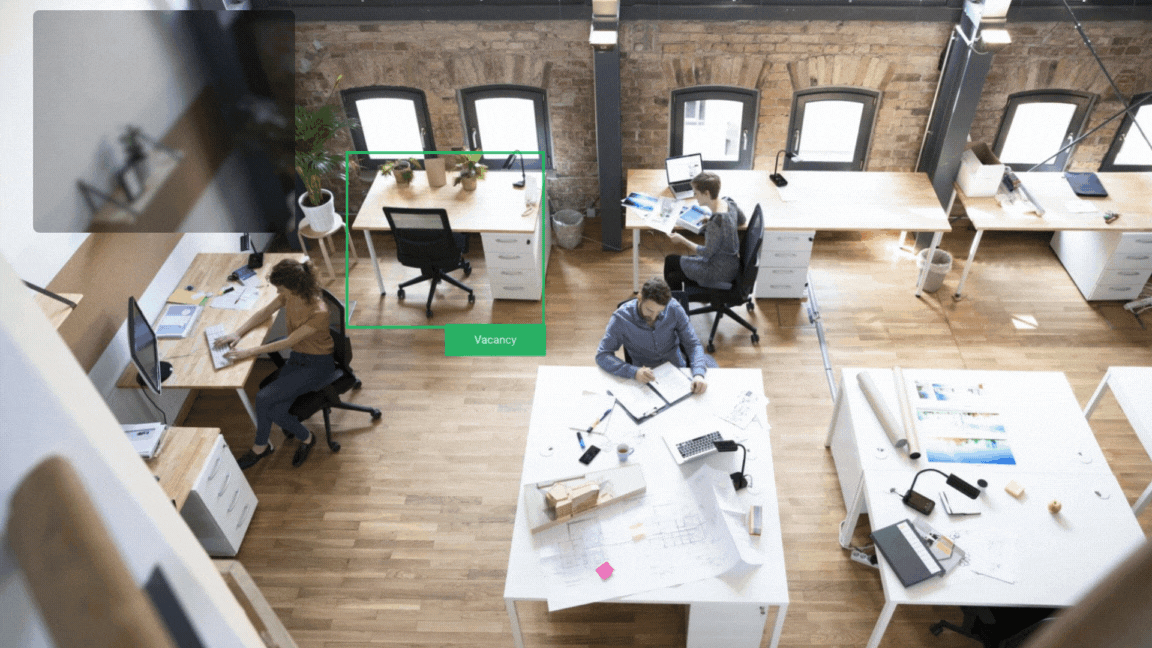Revolutionize your operations with Computer Vision Al — automate tasks, enhance accuracy, and unlock insights from visual data effortlessly

Unlock the power of Vision Al to transform how your business interprets and utilizes visual data. From object detection and image classification to real-time tracking, our cutting-edge solutions enhance accuracy and efficiency, driving smarter decisions and automation. Discover how Vision Al can elevate your operations through our compelling use cases.
Say goodbye to manual logs, biometric touchpoints, and proxy attendance. Our Facial Recognition Attendance System leverages advanced computer vision and deep learning technologies to offer a fast, secure, and contactless solution for employee attendance tracking.
Fully automated attendance saves 30-40 hours/month in manual HR effort.
Achieve 99% accurate, verified check-ins with real-time face detection.
Touch-free, instant check-ins improve daily employee convenience.
Auto-generated reports help identify trends like absenteeism and late arrivals.

Boost workplaces focus and safety by automatically identifying mobile phone use in working areas. Our AI-powered video analytics system uses advanced object detection and tracking to flag prolonged mobile phone usage and send real-time alerts to supervisors. Ideal for offices, production floors, or examination halls.
Detect mobile phone distractions and reduce unproductive time by up to 25%.
Real-time alerts help enforce mobile usage policies without constant human supervision.
Works across existing CCTV setups with no need for wearables or manual checks.
Get daily logs of mobile phone usage duration, frequency.
Optimize your workspace in real-time with AI-driven seat occupancy analytics. Our system integrates with your CCTV infrastructure to detect seat usage, identify underutilized zones, and support flexible seating policies—no sensors or manual headcounts required.
Improve seat occupancy by 20-30% with actionable usage data.
Real-time seat availability helps employees locate free desks quickly.
Lower energy and facility costs by scaling resources based on actual usage.
Get visual reports on peak hours, desk usage trends, and vacant seat heatmaps.

Managing large parking facilities efficiently is challenging due to high vehicle turnover, real-time space availability needs, security concerns, and optimal space use. Traditional manual methods are inefficient and do not scale well.
Implementing computer vision technology enhances the ability to manage parking spaces more effectively, leading to a 20% increase in the utilization of available spaces.
The use of computer vision systems reduces the time drivers spend searching for available parking spots by threefold, improving overall traffic flow and reducing congestion.
Advanced computer vision systems enhance security monitoring and incident detection, resulting in a 50% reduction in security-related incidents and faster response times to any breaches or issues.
Foreign objects or particles in packaged products can pose significant health risks to consumers and lead to severe financi losses for brands. Contaminated products can result in costly recalls, legal liabilities, and damage to brand reputation.
Implementing computer vision systems for detecting foreign object in packaged products leads to a 20% improvement in the accuracy identifying contaminants, ensuring higher product safety standard.
The use of computer vision technology reduces the time required to identify foreign objects by threefold, enabling quicker response actions and reducing the risk of contaminated products reaching consumers. This leads to three times quicker detection time of tampered products.
With more accurate and timely detection of contaminants, the
frequency of product recalls is reduced by 25%, resulting in
significant cost savings and minimizing damage to the brand’s
reputation.
Manufacturing plants need continuous operations without costly failures. Traditional maintenance is reactive and costly. Computer vision systems use sensors to detect early signs of wear, damage, and malfunctions, enabling proactive maintenance for efficient, uninterrupted operations.
This KPI measures the enhancement in accurately predicting maintenance needs, reducing unexpected equipment failures and ensuring more efficient operations.
This KPI tracks the reduction in the number of emergency maintenance incidents due to the proactive identification of wear, damage, or malfunction through computer vision systems.
This KPI evaluates the decrease in machinery and equipment downtime, contributing to continuous and efficient operations in the manufacturing plant.
This KPI evaluates the decrease in machinery and equipment downtime, contributing to continuous and efficient operations in the manufacturing plant.
Accurate inventory management is critical for retail operations to optimize stocking levels, prevent stockouts, and ensure efficient store operations. Manual counting processes are labour- intensive, prone to errors, and can lead to discrepancies in.
Implementing computer vision for inventory management enhances accuracy by 20%, reducing discrepancies between actual stock levels and inventory records.
The use of computer vision technology decreases the time required
for inventory audits by fourfold, leading to quicker and more frequent
stock checks.
Automating inventory management with computer vision results in
a 30% reduction in labour costs associated with manual counting
and inventory checks.
Employees in manufacturing face high injury risks due to dangerous working conditions. Ignoring safety standards can result in serious injury or death. Manufacturing plants must comply with safety regulations, or they risk severe penalties. Although cameras monitor employee movements, manual nonitoring can still be error-prone and lead to serious consequences.
Implementing computer vision for monitoring safety compliance leads to a 95% adherence rate to safety standards, significantly reducing the risk of injury and ensuring regulatory compliance.
The use of computer vision technology reduces the response time to safety incidents by 50%, allowing for quicker intervention and minimizing the impact of accidents.
The deployment of computer vision systems reduces the need for manual monitoring by 80%, enabling personnel to focus on more critical safety and operational tasks.
Tampering with FMCG products, packaging, or labeling can cause health risks, financial losses, and damage to brand reputation. Quickly identifying and addressing tampering incidents is crucial to maintaining consumer trust and product safety.
Implementing computer vision for tamper detection leads to a 15% improvement in the efficiency and effectiveness of the department responsible for quality control and product integrity.
The use of computer vision technology reduces the time required to detect tampering incidents by threefold, allowing for quicker responses and minimizing the impact on production and distribution. This leads to three times quicker detection time of tampered products.
Time Developing and deploying tamper detection systems is expedited threefold with computer vision solutions, leading to faster implementation and integration within the existing operational framework.
Discover how our Generative Al and Data Science services can transform your business.
We believe in value creation and positive impact to our customer communities in co-creating models and analytical applications.

© 2024 Inference Labs Private Limited
[vc_row][vc_column][vc_raw_html]JTNDJTIxLS0lMjBDYWxlbmRseSUyMGlubGluZSUyMHdpZGdldCUyMGJlZ2luJTIwLS0lM0UlMEElM0NkaXYlMjBjbGFzcyUzRCUyMmNhbGVuZGx5LWlubGluZS13aWRnZXQlMjIlMjBkYXRhLXVybCUzRCUyMmh0dHBzJTNBJTJGJTJGY2FsZW5kbHkuY29tJTJGaW5mZXJlbmNlJTJGZGlzY292ZXJ5JTNGaGlkZV9sYW5kaW5nX3BhZ2VfZGV0YWlscyUzRDElMjZoaWRlX2dkcHJfYmFubmVyJTNEMSUyMiUyMHN0eWxlJTNEJTIybWluLXdpZHRoJTNBMzIwcHglM0JoZWlnaHQlM0E2MzBweCUzQiUyMiUzRSUzQyUyRmRpdiUzRSUwQSUzQ3NjcmlwdCUyMHR5cGUlM0QlMjJ0ZXh0JTJGamF2YXNjcmlwdCUyMiUyMHNyYyUzRCUyMmh0dHBzJTNBJTJGJTJGYXNzZXRzLmNhbGVuZGx5LmNvbSUyRmFzc2V0cyUyRmV4dGVybmFsJTJGd2lkZ2V0LmpzJTIyJTIwYXN5bmMlM0UlM0MlMkZzY3JpcHQlM0UlMEElM0MlMjEtLSUyMENhbGVuZGx5JTIwaW5saW5lJTIwd2lkZ2V0JTIwZW5kJTIwLS0lM0U=[/vc_raw_html][/vc_column][/vc_row]